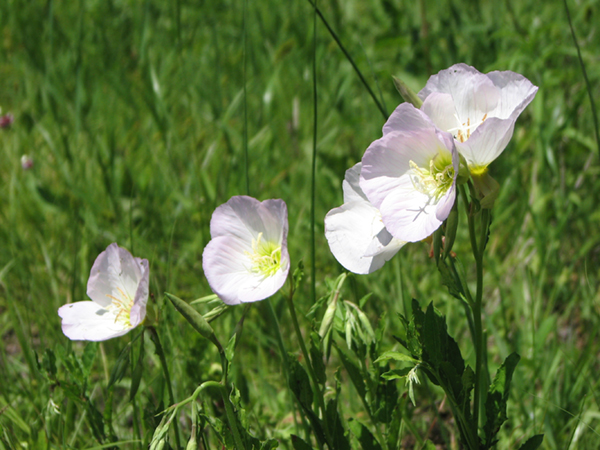Foolish Faith

by Amy Martin (c)
It’s the very definition of insanity, you know, to do something over and again and expect that somehow next time will be different. Yet I don’t feel insane, I feel blissful. Once again I‘m trying to naturalize plants to the wild, restoring what too many cattle and too much neglect did to the land at Osage Moon.
There’ve been pockets here and there that made it, osage trees that sprang up where we tossed the wrinkled green balls of our barn bois d’arc, tiny patches of grape hyacinth I’d pocked beneath a tree, pecan saplings from nuts we scattered that the critters somehow missed. But there were also pond plants dug up by wild pigs and many a transplanted tree stomped by cows that invade from the neighbors’ land.
Yet here I am, risking the vagaries of weather and wildlife, blotting from my mind the plant toll of last year’s droughts taking obedient plants from my yard in Dallas and digging them into soil here that I’ve rejuvenated with compost and lava sand. Lovingly raised from seed, viney pigeonberry shrubs now flop and cover the ground with heart-shaped leaves and lovely red berries easy for ground birds to eat. Small turks’ caps, grown from seed gathered in my neighbor’s garden bed, promise a summer of audacious cardinal flowers and phallic yellow stamens.
Into the ground they go, in the shade fencerow alongside my rural cabin. Those plants themselves will someday be, like their city cousins, a nursery for seeds and berries. That fertile bounty will be wildscaped in the far reaches of the property, planted with the same foolish faith. Each garden bed, each hopeful plant, serves as a tiny ark, restoring species and diversity to this 75 acres of land.
My husband works in acres at a time, using the old Ford tractor to take out sterile Bermuda grass pasture and put in native grasses. Their unruly profile of strappy leaves and colorful forbs taunts the nearby submissive fields, clipped into hay or stomped by cows. Wave after wave of grasses ripen and shower their seeds, far more food than the wildlife could ever eat, fertility for the sheer joy of it.
What are we keeping it for, this 75-acre ark? To be ready for when all people come to their senses and live in cooperation and balance with each other, the land and its inhabitants? Or is it for that time beyond us? If humanity crashes and burns the planet and civilization fall into rubble, will this land be the seed from which nature reasserts herself?
March 18, 2009





